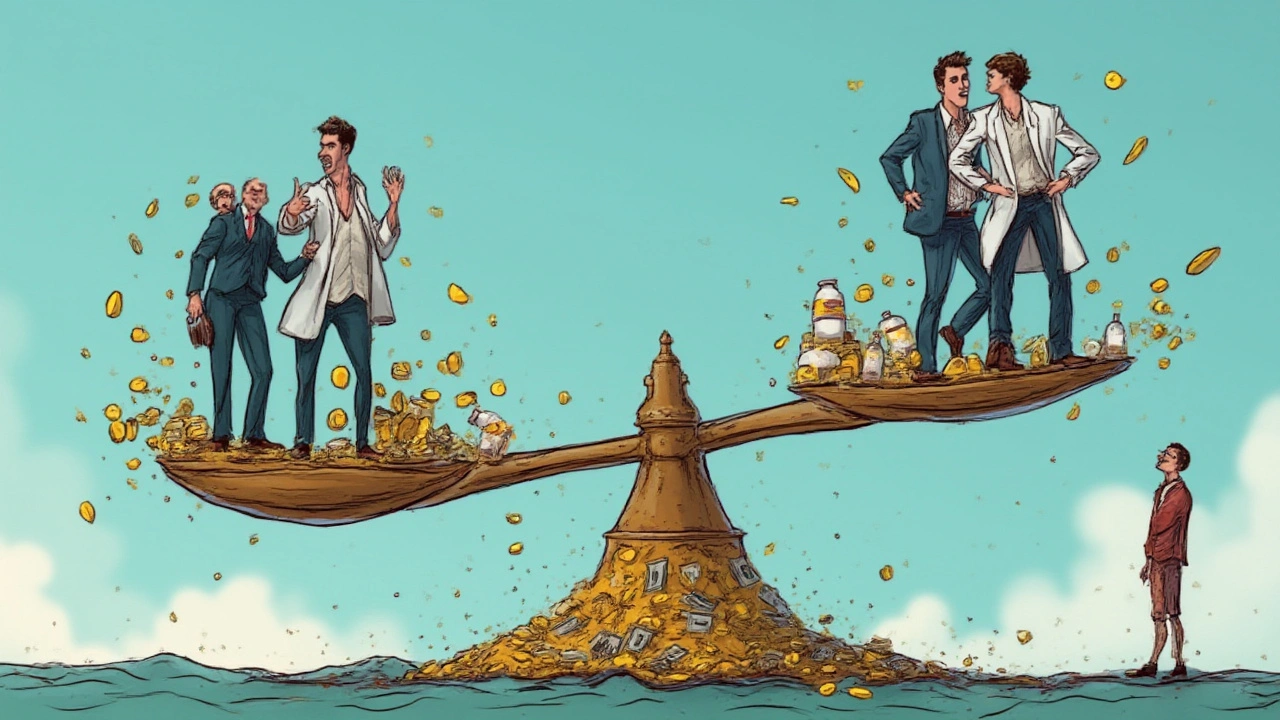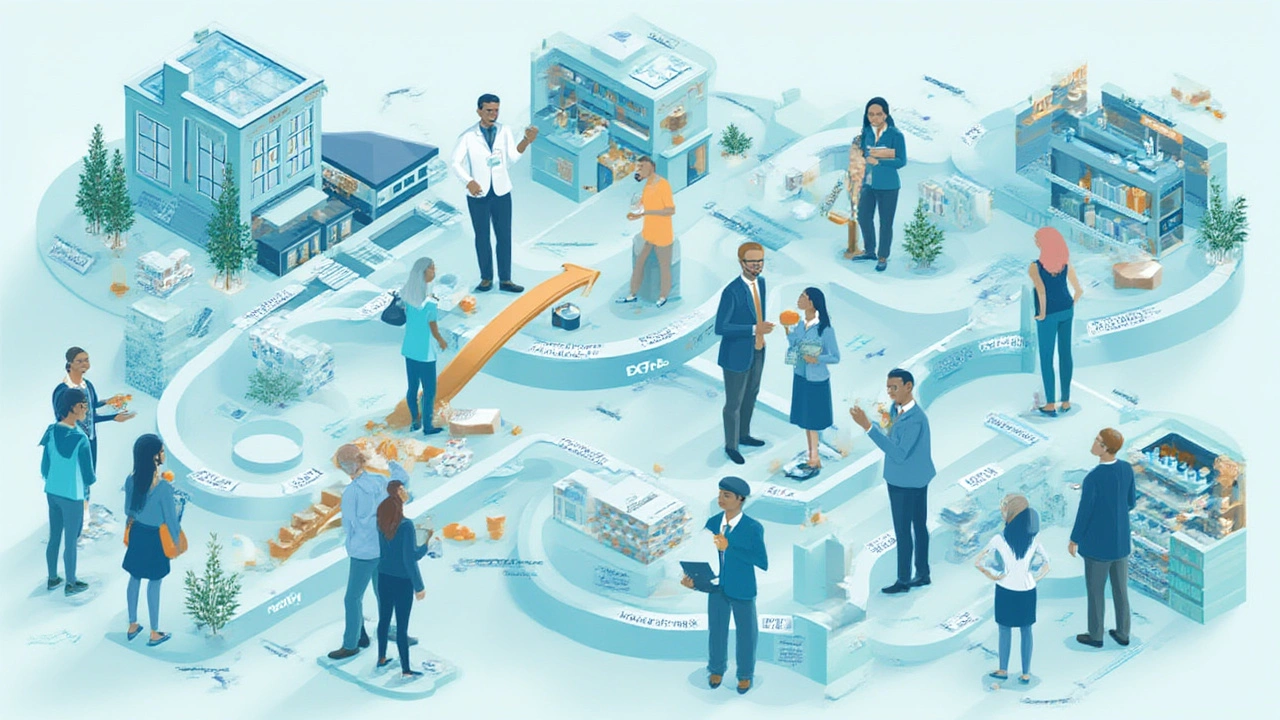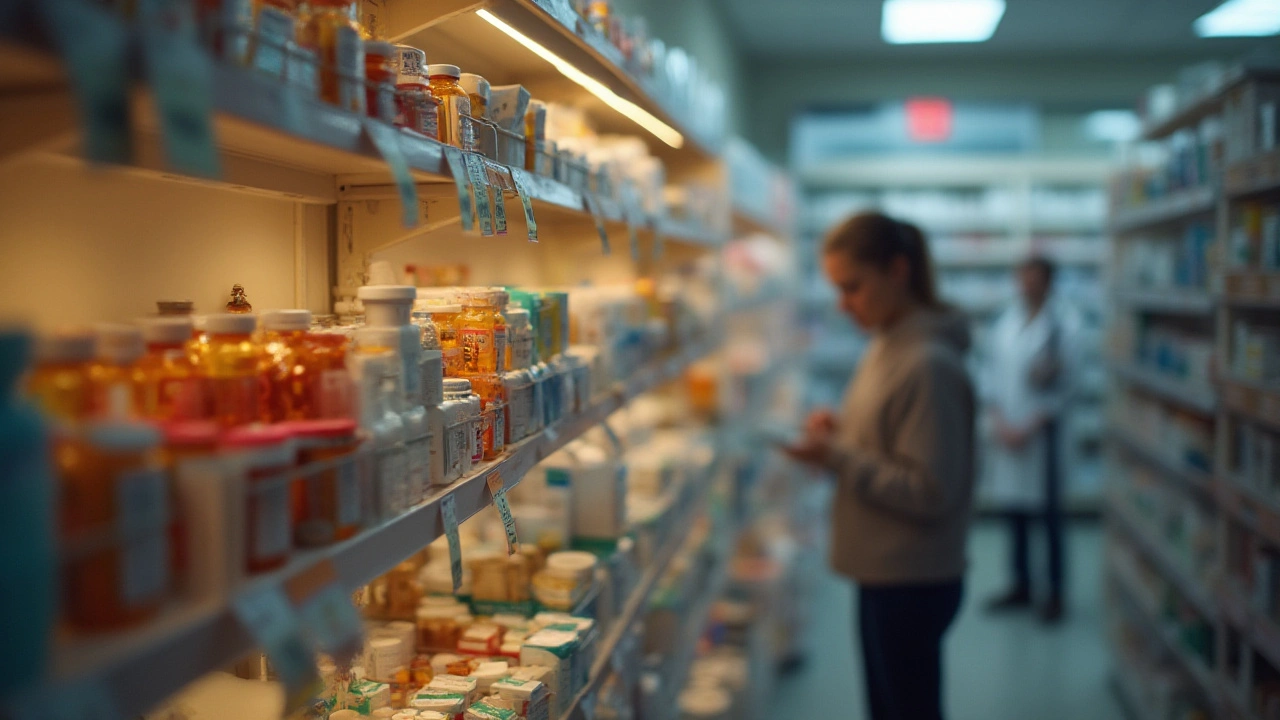Imagine getting a bill for your insulin and wondering why that tiny vial eats up your paycheck. It's not just you; people everywhere are asking the same question: why are drug prices so unpredictable, and sometimes outrageously high? Turns out, the system behind pharmaceutical pricing is part business chess match, part regulatory labyrinth, and frankly, a bit of a mess.
The Long Road from Lab to Pharmacy
The story of a drug doesn't start on pharmacy shelves. It begins, sometimes twenty years earlier, inside a lab where scientists are hunched over petri dishes hoping for a breakthrough. Drug development is a marathon. Pharma companies pour billions into research and development, knowing only a handful of their projects will ever reach the market. According to a 2022 report from the Tufts Center for the Study of Drug Development, it costs, on average, $2.6 billion to bring a new drug to market. That's factoring in all the duds and dead-ends too—most compounds never make it past early testing.
Ever wonder why newer drugs always come with eye-watering prices? Part of the answer is risk. Companies recoup not just the cost of the winning drug, but also the money poured into the losers. For every 5,000 compounds screened, only about five enter clinical trials, and just one actually makes it through all the regulatory hurdles.
But that’s not the only hurdle. Regulatory approval drags the process out, intentionally so. Agencies like the US FDA or the European Medicines Agency demand a mountain of clinical trial data, safety checks and proof that the thing actually works. After surviving these gauntlets, there’s still patent application, which grants companies a 20-year monopoly to sell the drug exclusively. It's both an incentive for innovation and, honestly, a springboard for setting high prices.
Take Sovaldi, a hepatitis C cure launched in 2013. It promised a whopping 95% cure rate, but made headlines for its $1,000-per-pill price tag. Some critics screamed price-gouging, but Gilead, the maker, pointed to the multi-billion-dollar development price and short patent window. As with most things, the truth is complicated—no single villain in sight.
Once the patent clock starts ticking, pharma companies can charge what the market—meaning, insurances, governments, and sometimes desperate individuals—will bear. But what about generics? After patents expire, other companies can jump in, often slashing prices by up to 80%. That’s why your aunt’s once-expensive cholesterol pills are now super cheap.
But let's not skip over manufacturing. Some medicines, especially the new "biologics" made from living cells instead of chemicals, are insanely complex to produce. Even after approval, quality control and consistent manufacturing drive up overheads, especially when you’re meant to make the same perfect batch each time.
Another wild card is regulation. Governments in countries like the UK or Ireland negotiate prices directly, sometimes banning overpriced drugs. In the US, though, the negotiation power is fragmented. Medicare couldn't even negotiate directly on drug prices until 2023. This patchwork of systems means a med could cost €2 in Dublin but $300 in Texas.
Beyond science and law, the influence of marketing can’t be ignored. Pharmaceutical giants routinely spend more on advertising than R&D, sometimes by a factor of two. Slick TV campaigns, sample packs, and glossy pamphlets drive demand—and, you guessed it, sneak extra costs into your prescription.
| Stage | Estimated Cost (%) | Explanation |
|---|---|---|
| R&D (including failures) | 30–40% | Research, clinical trials, regulatory hurdles |
| Manufacturing | 10–15% | Production, quality controls, packaging |
| Marketing | 20–25% | Promotion, sales reps, adverts |
| Distribution | 5–10% | Wholesalers, logistics, pharmacies |
| Profit | 10–15% | Net profits after all costs |
If you’re wondering who keeps an eye on all this, the answer is... complicated. In most places, except for a handful of wealthy countries, there’s little oversight. It’s a patchwork of local rules, market forces, and a lot of hand-wringing.

Bargaining, Rebates, and the Forces That Shape Drug Pricing
Once a drug gets through the red tape, the pricing circus begins. It’s not a free-for-all, but it comes close. There’s a lot of backroom bartering, and the actual price you pay is rarely the price set by the drug makers. Instead, healthcare systems, insurance companies, wholesalers, and even pharmacies chip away at the sticker price, leaving a messy trail of rebates and discounts.
If you look at the United States, the system is almost wild-west. Pharmaceutical companies slap on a list price—sometimes called the "wholesale acquisition cost"—but few patients ever pay that amount. Pharmacy Benefit Managers, or PBMs, work out secret rebates with drugmakers. Bloomberg reported that by 2024, these rebates have pushed up list prices just so drugmakers have room to "discount" to PBMs, making it impossible for anyone to know the real price.
In Ireland (and much of Europe), things are a bit more transparent. Governments use massive buying power to hammer down prices, often through long negotiations. The Health Service Executive (HSE) here negotiates directly with the drug companies, reviewing cost-effectiveness using metrics like QALY—Quality Adjusted Life Years. Basically, if a new cancer drug isn’t more effective than what’s already out there, you won’t see the Irish government breaking the bank for it.
But not all negotiation goes the government route. Hospitals, insurance collectives, even giant pharmacy chains like Walgreens and Boots wield power. Who negotiates matters a lot. US Medicaid might pay pennies for generic paracetamol, but an uninsured American might pay a mark-up ten times higher at a local chemist, simply because no one bargained on their behalf.
A famous 2023 study in The Lancet found insulin prices in the US were up to five times higher than in Europe because the negotiation system is fragmented on the American side. As Dr. Peter Bach, one of the study's authors, said:
" Insulin is a perfect case study of what happens when a lifesaving treatment is left to a pricing system with no clear rules and too many middlemen. "
Generic drugs might sound like the answer—and often, they are. Once patents expire, competition usually drives prices down. But shortages, supply chain hiccups, or even deliberate "pay-for-delay" deals (where brand-name makers pay generics to stay off the market longer) can foul things up.
Here’s something wild—the same pill, from the same factory, can have a different price in each country. Drug companies use "value-based pricing," which means they set prices by guessing what the local system will pay, based not on the actual production cost, but perceived value to the patient and health care system. So, in Australia, where strict regulations cap prices, cancer meds might be affordable. In the US, where direct-to-consumer ads persuade patients to demand the newest thing, those same meds can bankrupt families.
Another twist is price hikes for old yet vital meds. Remember Martin Shkreli? He hiked the price of Daraprim, a 60-year-old drug for a rare infection, by over 5,000% overnight. That sort of maneuver only works in markets lacking competition—another reminder that legal loopholes, not just innovation, sometimes dictate prices.
If you want to see price differences in action, here’s a quick table from an OECD 2024 comparison:
| Drug | Country | Price (per unit) |
|---|---|---|
| Humira (adalimumab) | USA | $2,600 |
| Humira (adalimumab) | UK | £410 |
| Humira (adalimumab) | Germany | €530 |
| Humira (adalimumab) | Australia | $1,300 AUD |
| Humira (adalimumab) | Ireland | €560 |
Notice the wild swings—even when governments negotiate prices, there’s no universal rulebook.
So, with all these moving parts, is there any hope for the average person fed up with sky-high prices? A few simple steps can sometimes save you a bundle:
- Ask for generics whenever possible—your pharmacist can often switch to a cheaper bioequivalent.
- Check if your country or insurer has any programs for chronic disease—there might be subsidies or special schemes you didn’t know about.
- Use legitimate price comparison tools, like the Irish Health Pricing Office or GoodRx in the US.
- If you travel, check local rules for filling prescriptions—some countries let you buy much cheaper, legally, with a doctor’s note.
Ultimately, drug pricing is as much about power and priorities as it is about costs and chemistry. And despite what the glossy commercials suggest, there really is no magic formula at the pharmacy counter.

Innovation, Patents, and the Future of Drug Affordability
Pharmaceutical companies argue that high prices don’t just fund R&D—they’re the engine driving medical breakthroughs. Without the lure of profit, would anyone invest billions in treatments for rare diseases, or new antibiotics in a world of growing resistance?
But the current system creates perverse outcomes. Blockbuster drugs—those that make more than $1 billion a year—get all the investment, while treatments for rare conditions, “orphan drugs,” only get attention if big incentives are on the table. That’s why you’ll see a flurry of new weight-loss drugs, cancer immunotherapies, and diabetes treatments, while tropical diseases and new antibiotics lag behind.
The patent system was supposed to balance innovation with public good—twenty years of exclusive rights, then let the generics crash the party. But companies have gotten crafty, using “evergreening” strategies (tweaking doses, delivery methods, or even packaging) to win extra years of protection. The result? Life-saving drugs sometimes stay out of reach for longer than anyone planned.
In 2023, the World Health Organization called for governments to rethink how they reward new drug development. Instead of letting private companies set prices in a vacuum, ideas like public funding for drug research or “prize fund” schemes—where scientific teams win set cash awards for breakthroughs, but the drug goes generic—are gaining steam. But for now, those are more theory than fact.
One glimmer of hope is the rise of biosimilars—cheaper copies of expensive biologic drugs. In Europe, biosimilars now account for over 30% of prescriptions in some categories. That’s helped drive down costs for treatments like insulin and rheumatoid arthritis drugs, though legal battles sometimes slow the rollout in places like the US.
Transparency is finally getting traction too. By 2024, both the European Union and the US started pushing for laws that force pharmaceutical companies to reveal R&D spending, cost breakdowns, and pricing rationales when launching new blockbusters. Little by little, the curtain is getting pulled back.
For patients, the future isn’t crystal clear. But knowing the core factors—the cost of failure, the power of negotiation, and the quirks of law and patents—gives you ammunition when arguing with your insurer or making sense of a prescription bill.
One last tip: next time your GP hands you a script, ask questions. Is there a cheaper alternative? Is that new drug really better, or just newer? Sometimes, saving hundreds is as simple as being a tiny bit nosy.
This tangled system is driven as much by people and politics as by science—so if you feel like it’s all a bit mad, you’re definitely not alone.

